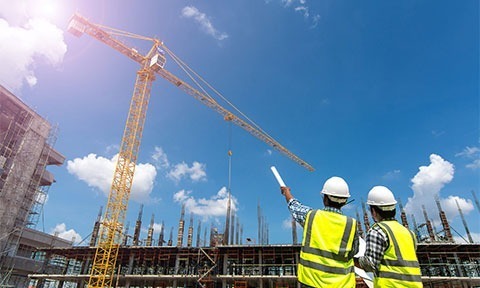Analysis & Design of Submarine Structures – 3 Day
- Course focuses on submarine structural design, materials, and pressure hulls for depths exceeding 1000m.
- Comprehensive coverage of structural design philosophy and strength formulations.
- Intended for Engineers, Operations managers, Fabricators, Scientists, and Technologists.
- Taught by Dr. Piero Caridis and Professor Purnendu Das, experts in naval architecture and marine engineering.
- Course covers topics such as elastic stability, collapse, reliability analysis, fatigue, and corrosion.
Overview
The Online Submarine Structures Training course focuses on the structural design of submarines, emphasizing the selection of materials, toughness, and strength formulations. It covers topics such as elastic stability of pressure hulls, collapse of pressure hull structures, and structural reliability analysis. The course is designed for Engineers, Operations managers, Fabricators, Applied Scientists, and Technologists interested in submarine design. Led by experts like Dr. Piero Caridis and Professor Purnendu Das, the program spans 2.5 days and includes lectures on finite element analysis, submarine fatigue, and corrosion.
Who should attend
Engineers, Operations Managers, Fabricators, Applied Scientists, Technologists
Course Content
ABOUT THE COURSE
Most submarine designs are weight critical, especially as operational diving depth increases. It follows that designers will strive to select an available high strength low density material compatible with good fabricability and toughness. Toughness is required not only for the usual low temperature reasons, but also to resist high dynamic loads from depth charge attack. High strength steels have proved to be reasonably satisfactory, the main limitation being how to achieve adequate weldability and toughness for military submarines with steels above about 700N/mm2 proof stress. More exotic materials would be considered for depths exceeding 1000m say. At really great depths the required pressure hull thicknesses can become so large that buckling ceases to be a problem even with low modulus materials and frames can effectively be dispensed with. In many respects the design then becomes simpler and the conventional safety factor can be reduced.
This course is meant to provide comprehensive coverage of structural design and also concentrate on philosophy and underlying essentials and strength formulations for design.
WHO SHOULD ATTEND
The course is intended for Engineers, Operations managers, Fabricators, Applied Scientists and Technologists interested in submarine design.
PROGRAMME (ALL TIMINGS are in BST (GMT +1)
Day 1
09:00 – 10.30 Lecture 1: Elastic Stability of Pressure Hulls
Dr Piero Caridis
10:30 – 10:45 Break
10:45 – 12:15 – Lecture 2: Collapse of pressurehull structures
Dr. Piero Caridis
12.15 – 12.45 Break
12:45 – 14:15 Lecture 3: Structural Reliability Analysis
Professor Purnendu Das
14:15 – 14:30 – Break
14:30- 16:00 – Lecture 4: Design of Pressure Hull Structure
Dr Piero Caridis
Day 2
09:00 – 10:30 Lecture 5: Finite Element I
Dr Piero Caridis
10:30 – 10:45 Break
10:45 – 12:15 Lecture 6: Finite Element II
Dr Piero Caridis
12:15- 12:45 Break
12:45 – 14:15 Lecture 7: Structure Reliability Application
Professor Purmendu Das
14:15- 14:30 Break
14:30- 16:00 Lecture 8: Design Code Example PD5500
Dr. Piero Caridis
Day 3
09:00 – 10:30 Lecture 9: Submarine Fatigue
Dr Piero Caridis
10:30-10:45 Break
10:45- 12:15 Lecture 10; Submarine Corrosion
Dr Piero Caridis
Dr Piero Caridis B.Sc. M.Sc. Ph.D.
Dr Caridis received his education in Greece and attended the universities of Glasgow and London (UCL) where he studied naval architecture at an undergraduate and a postgraduate level. After his studies and following completion of his military service he was employed as a marine superintendent in a shipping company in Piraeus, Greece. He was subsequently employed by Glasgow University and carried out research which led to his PhD degree in nonlinear structural mechanics. Dr Caridis then returned to Greece and joined the School of Naval Architecture and Marine Engineering of the National Technical University of Athens where he taught courses in ship strength and inspection, repair and maintenance of ship structures for thirty years. His research interests included nonlinear behaviour of ship structures, marine accident.
analysis, ship repair and maintenance and the history of ship structural design and ship construction. He has been a member of the International Ship and Offshore Structures Congress (ISSC) committees since 1991 and is currently a member of Committee IV.1 Design Principles and Criteria.
Dr Caridis retired from NTUA in 2016 following which he taught a number of courses at the University of Strathclyde in Glasgow, Scotland (ship structures, shipping economics and maritime business-related courses) during the period 2017- 19.
Dr Caridis has authored two texts on the mathematical theory of ship structures (in Greek) and one text dealing with inspection repair and maintenance of ship structures (in both English and Greek). Details of these texts are given below. He is currently working on developing a series of texts dealing with ship structures.
1. Inspection, Repair and Maintenance of Ship Structures. Second Edition 2009, Witherbys Seamanship International, Edinburgh 326 p.
2. Global Strength of Ships. Marine Structures Series (2022). Distrributed by Lulu.
( https://tinyurl.com/y4efrlwd ) 708 p.
Professor Purnendu Das. BE, ME, PhD, C.Eng, C.MarEng, FRINA, FIStructE, FIMarEST
Professor Das has been the Director of ‘ASRANet Ltd’ (an ISO 9001-2008 certified company) since February 2006. He retired as a Professor of Marine Structures in the Department of Naval Architecture & Marine Engineering at the University of Strathclyde, UK. Past EU projects were MARSTRUCT (a network of excellence on Marine Structure) and SHIPDISMANTL (a cost effective and environmentally friendly dismantling of ship structures).
Past industrial projects included work from the UK Health and Safety Executive (HSE), MoD UK, Subsea-7 UK, Shell, Woodgroup and US Navies etc. He was the principal investigator of many EPSRC projects. Before joining the University of Glasgow in 1991 he worked with British Maritime Technology as Principal Structural Engineer (1984-91). He is the author of more than 250 publications, including contract reports and more than 60 journal papers and is a member of the editorial boards of the ‘Journal of Marine Structures’, ‘Journal of Ocean and Ship Technology’ and ‘Journal of Ocean and Climate System’ amongst others. His areas of research include limit state design and analysis & reliability analysis of ship & offshore structures. Purnendu Das has wide ranging industrial and academic contacts and has advised and supervised 20 PhD students, to his credit. Details of visits and collaborations include his various sabbatical study periods spent at University of California, Berkeley, USA (July – September 1996), at Lloyd’s Register of Shipping (August 1997), Kockums Ltd (July 1998) and spent some time at Instituto Superior Técnico (IST), Lisbon (July 2000).
He has been running various successful CPD courses which are attracting many people from different industries. These courses are on ‘Fatigue & Fracture Analysis’, ‘Ships at Sea’, ‘Advanced Analysis and Design of Offshore Structures’, ‘Offshore Floating System Design’, ‘Structural Response under Fire and Blast Loading’ and ‘Design of Pipelines and Risers’ amongst others. He was a member of ISSC (International Ship and Offshore Structure Congress) for the periods of 1991-97 and 2003-2006. He was a member of the OMAE (Offshore Mechanics and Arctic Engineering) Organising Committee on ‘Safety and Reliability’. He has organised six ASRANet International Conferences in 2002 (Glasgow), 2004 (Barcelona), 2006 (Glasgow), 2008 (Athens), 2010 (Edinburgh). 2012 (London), where a large number of participants from various countries attended. The theme of the conference is the integration of risk, advanced structural analysis and structural reliability analysis as applicable to various engineering structures. He is also a visiting Professor of University of Montenegro, Montenegro and University of Stavanger, Norway.
Duration:2.5 Days
Cost:£895 + Vat



